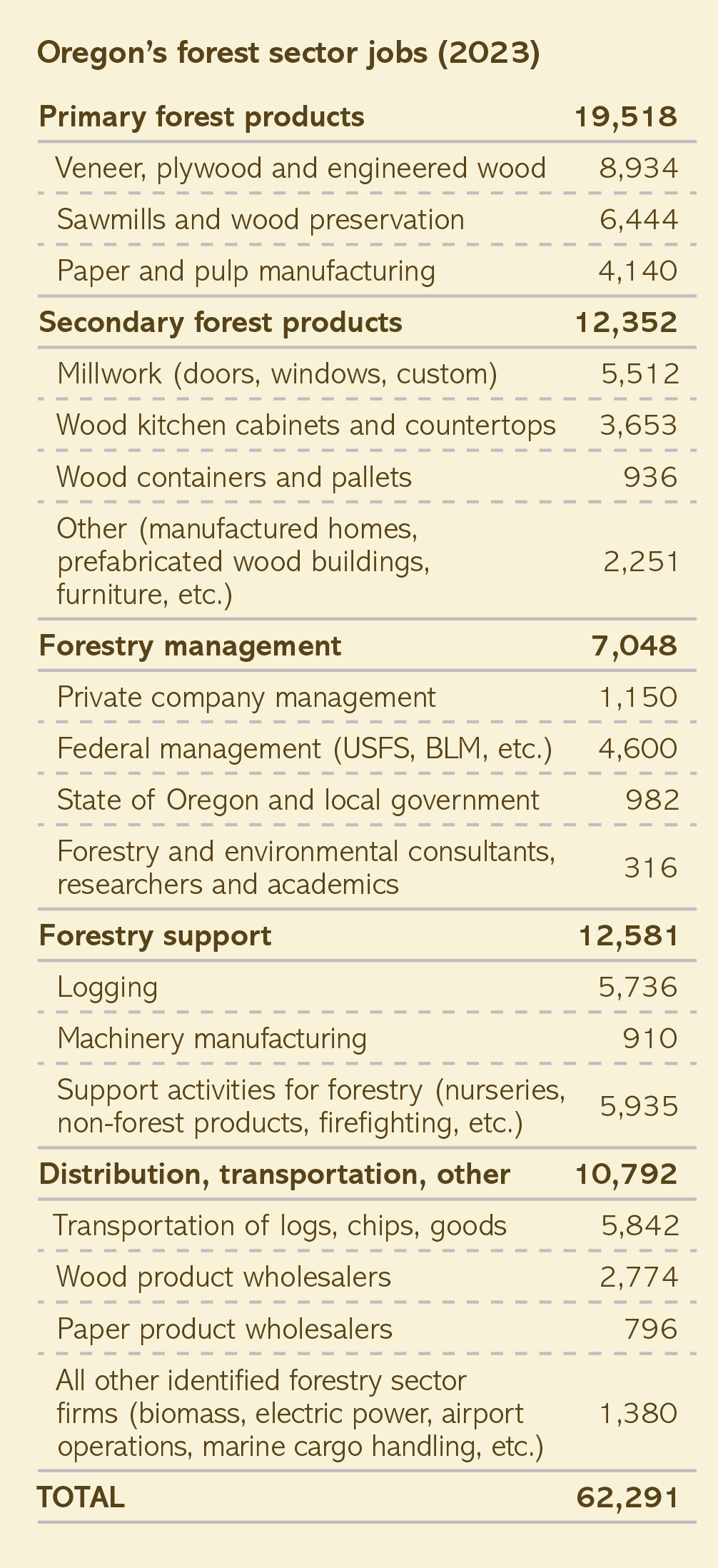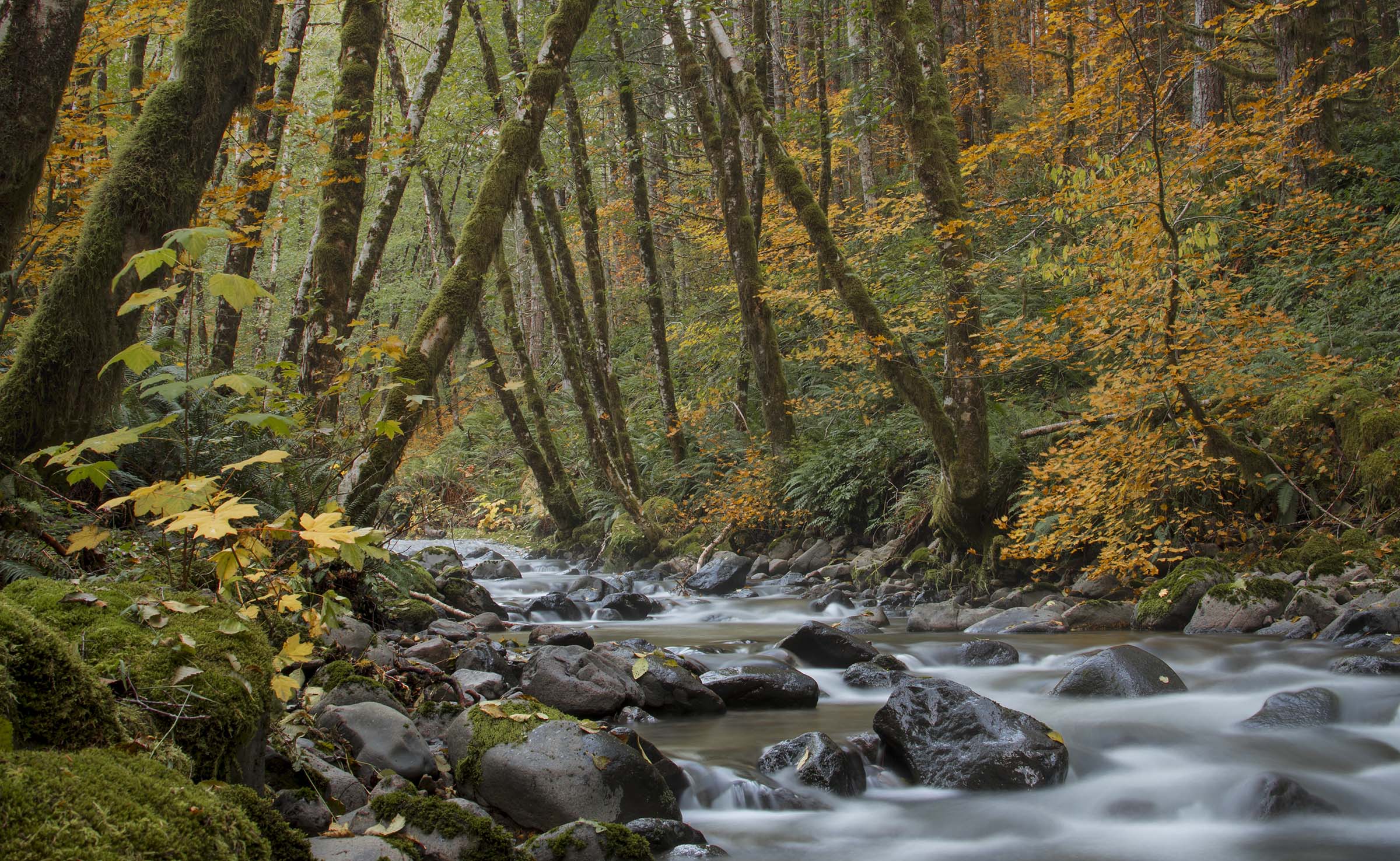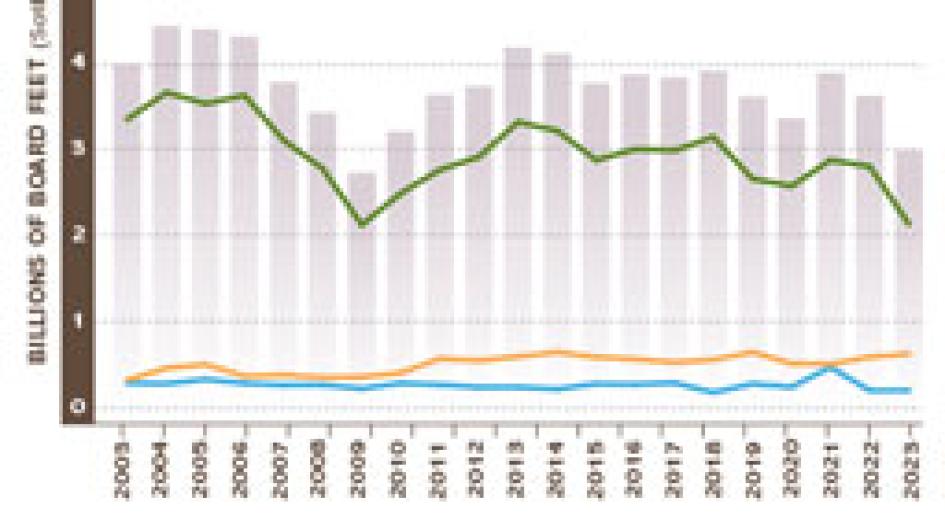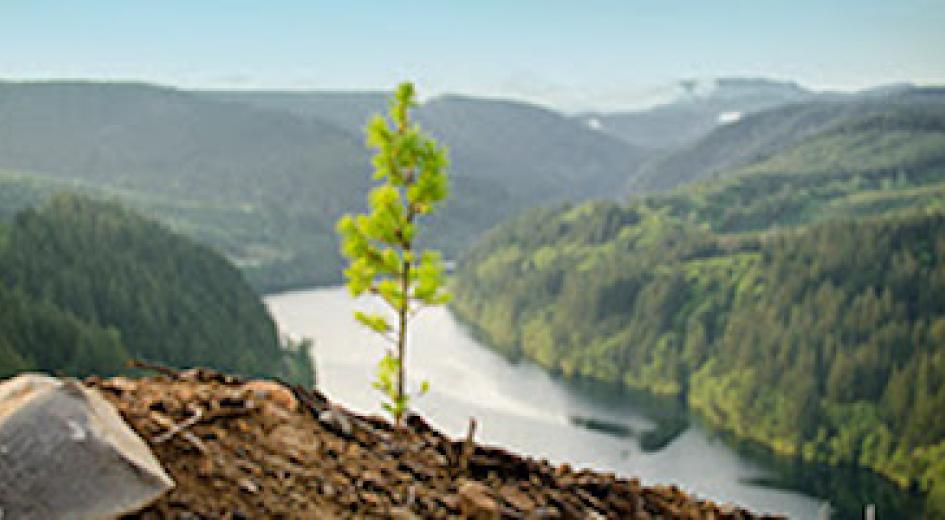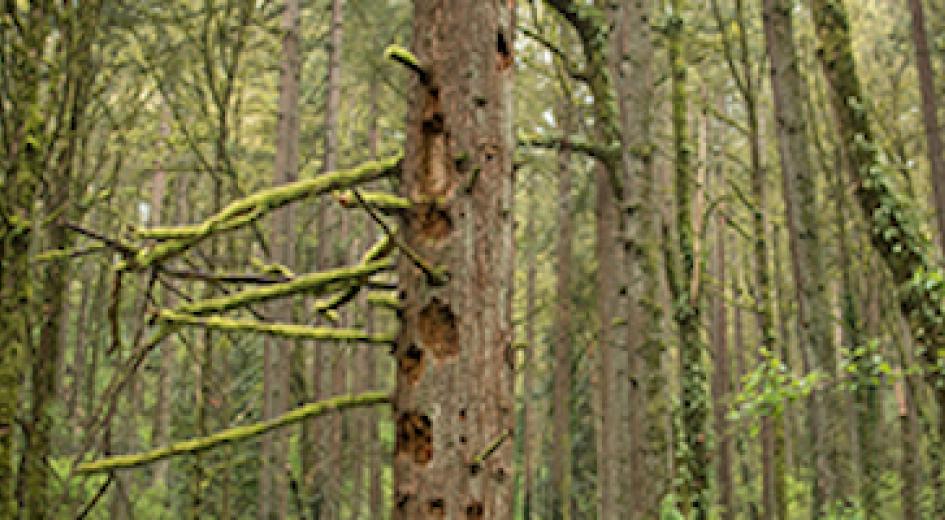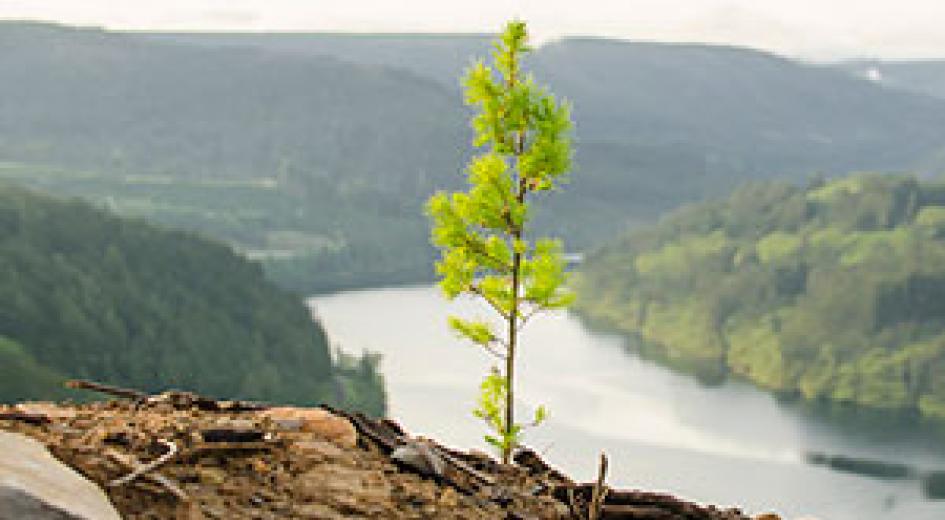Every two years, the Oregon Forest Resources Institute compiles the latest data on Oregon’s forests into a detailed reference guide called Oregon Forest Facts. It contains a series of charts, graphs and maps that tell the story of the state’s forests and forest-based economy.
Oregon Forest Facts includes information and statistics on forestland ownership, timber harvest, forest-based employment and wood products production. Other topics include water quality in Oregon’s forests, investments in protecting watershed and salmon habitat, and acres of Oregon forestland certified by third-party sustainability programs.
The pocket-size booklet is available for digital download or to order online.
The latest data from Oregon Forest Facts can also be accessed at OregonForestFacts.org. The mobile-friendly website includes the option to easily share - via email or social media - charts and graphs with information about Oregon's forests.
Forestland Ownership
Forestland Area
Nearly half of Oregon is forestland. Oregon’s forests vary by species composition and ownership. Douglas-fir trees dominate the forests in western Oregon, ponderosa pine in eastern Oregon and mixed conifers in southwest Oregon. In terms of ownership, the federal government manages 60% of Oregon forests; private owners, including Native American tribes, manage 36%; state and county governments manage 4%.
Learn more at OregonForestFacts.org

Harvest & Production
While timber harvest on federal lands sharply dropped in the late 1980s and early 1990s, mainly due to changes in federal forest management emphasis following the listing of the northern spotted owl and several fish as threatened species, timber harvest levels from public and private forestlands over the past 20 years have remained relatively stable. The Great Recession (2007-09) and the collapse of the housing market brought a severe contraction in the U.S. demand for lumber. Consequently, Oregon’s timber harvest levels reached a modern-era low in 2009, with the smallest harvest since the Great Depression in 1934. By 2013, the harvest had rebounded to roughly pre-recession levels.
The 2020 Labor Day fires led to a short-term increase in timber harvest due to post fire salvage logging on private land. This is reflected in the 2021 harvest levels of 3.9 billion board feet. However, long-term annual timber harvest is expected to decrease by 100 million to 250 million board feet per year from 2026 to 2065 due to loss of future growth on trees killed by wildfires in 2020.
Learn more at OregonForestFacts.org

Water
PROTECTIVE BUFFERS
Clean water is crucial to all Oregonians. Most of Oregon’s municipal water originates in forested watersheds, including those managed for wood production. The cleaner the source water stays, the less treatment and filtration it will need as it is prepared for human consumption, and the better fish and amphibian habitat it creates.
Loggers and forestland owners are required to leave areas of uncut trees and vegetation along the borders of streams, rivers, lakes and wetlands. This rule is most stringent for waterways where fish are present, and those that are sources of drinking water. These areas are called “riparian management areas,” “RMAs,” or simply “stream buffers.” Within these buffers, timber harvesting is either prohibited or severely restricted.
NEWLY EXPANDED HABITAT
The width of required stream buffers was expanded in 2024, the result of legislation following agreements reached during the Private Forest Accord negotiations between representatives from the timber industry and major conservation groups. Protective buffers along fish-bearing streams were increased overall, and range from 75 to 110 feet in width, depending on the size of the stream and whether it contains certain species of fish. The goal of the newly expanded stream buffers was to increase and improve habitat for native Oregon fish, as well as four species of amphibians and one frog.
Forest practice laws also require stream buffers for some ephemeral headwater streams. These are streams that are seasonal, or sometimes present during significant rainfall, but are dry at other times of the year.
The width of the required no-cut buffers varies by stream size and location.
Learn more at OregonForestLaws.org
Sustainability
FIRST IN THE NATION
In 1971, Oregon became the first state to pass a comprehensive law to regulate forest practices and safeguard water, fish and wildlife habitat, soil and air. The rules of the Oregon Forest Practices Act are continually reviewed and updated to keep pace with the most current scientific research.
The rules most recently changed in 2022, in response to the Private Forest Accord agreement between the timber industry and conservation groups. Some of those new rules are included below.
IMPORTANT RULES
- Reforestation: Landowners must complete replanting within two years after a timber harvest, with at least 200 tree seedlings per acre. Within six years, the harvest area must contain healthy trees that can outgrow competing grass and brush on their own.
- Water and stream protection: Timber harvesting, road building and the use of chemicals are restricted close to streams, to protect fish and safeguard the source of much of Oregon’s drinking water. In 2022, protective buffers along streams where logging is prohibited were expanded. New standards were added for fish-bearing-stream culvert sizes and culvert installation procedures, and some road building rules were modified to focus on minimizing sediment in streams.
- Wildlife habitat protection: Live trees, standing dead trees (snags) and fallen logs must be left after a timber harvest, to provide wildlife habitat.
- Limits on clearcutting: Clearcuts cannot exceed 120 acres within a single ownership, including the combined acreage of any clearcuts within 300 feet of each other.
- Steep slopes: In 2022, the Oregon Legislature passed new rules related to logging on steep slopes, such as retaining trees in certain areas, with the intention to provide high-quality habitat to support long-term conservation of stream habitats.
- Chemical application: Forest protection laws limit the use of chemicals. Foresters must follow a variety of state and federal regulations when using herbicides.
FOREST REGULATION AND SUSTAINABILITY
Some states, including Oregon, have comprehensive legislation and regulations-commonly called "forest practices acts"-to encourage forest sustainability.
This map of the United States shows which states were classified in 2022 as having regulatory systems like Oregon's governing forestry practices. The map also shows which states have non-regulatory systems that rely on voluntary best management practices and which states are considered quasi-regulatory because they don't require best management practices but enforce environmental infractions. In addition, some states require licensing or registration for foresters.
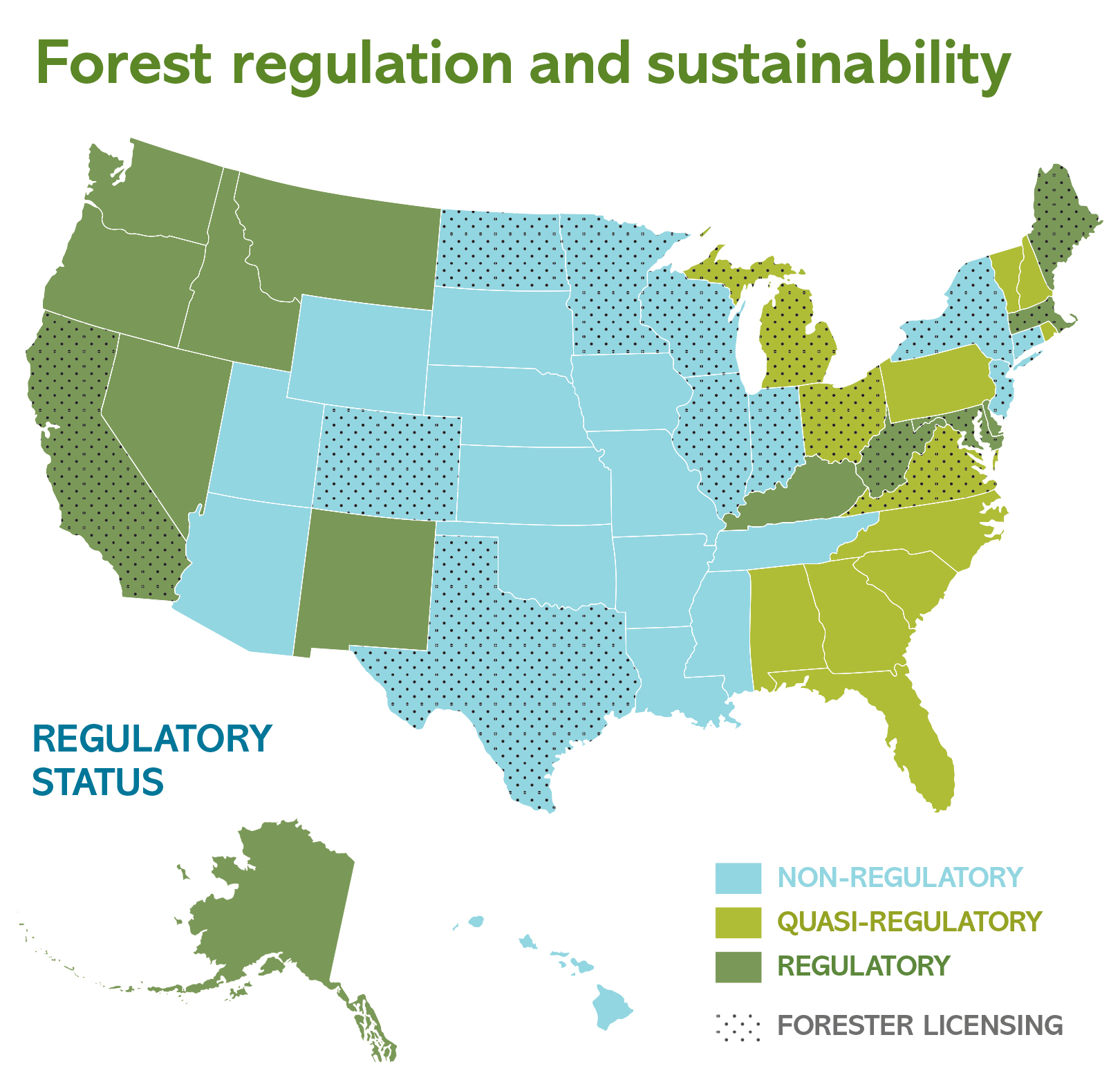
Fire
Oregon’s 2024 fire season was record-breaking. More than 1.9 million acres burned across the state, the most acreage burned during a single season in the last 30 years. Lightning and human-caused fires ignited during extreme heat strained Oregon’s fire resources as firefighters battled six “megafires” (wildfires greater than 100,000 acres) during the 2024 fire season. Other states and Canada sent firefighters and resources to assist the Oregon Department of Forestry (ODF), which serves as Oregon’s largest fire department, protecting private forestlands as well as some public land.
Learn more at OregonForestFacts.org
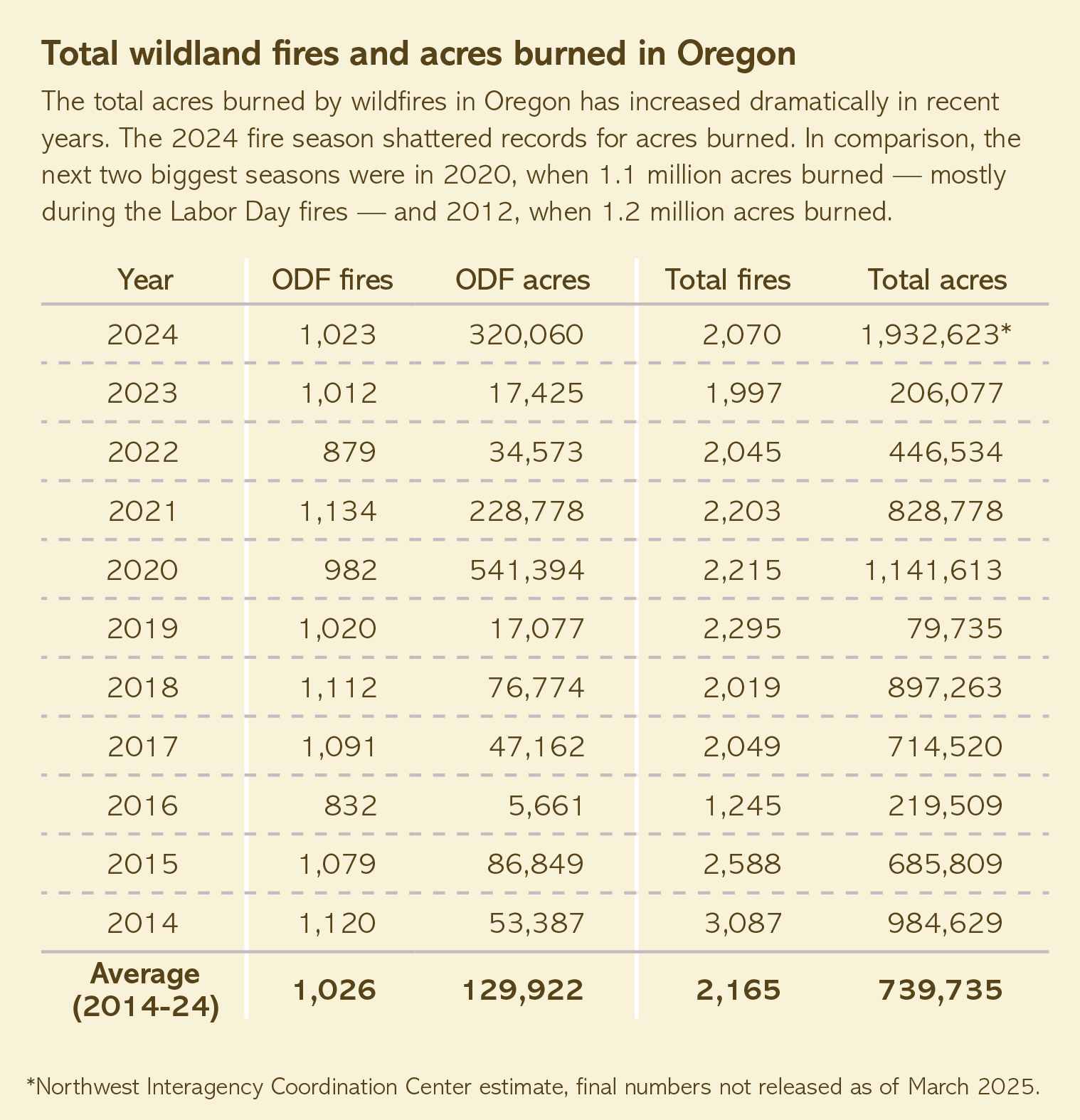

Employment
Oregon’s forest sector includes a wide variety of employment, from forestry, logging, millwork and cabinetmaking to engineering, hydrology, business management and academic research. Here’s a rundown of Oregon’s forest sector jobs in 2023, by type of employment.
Learn more at OregonForestFacts.org
